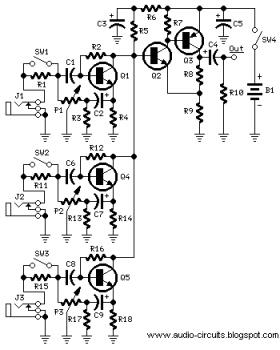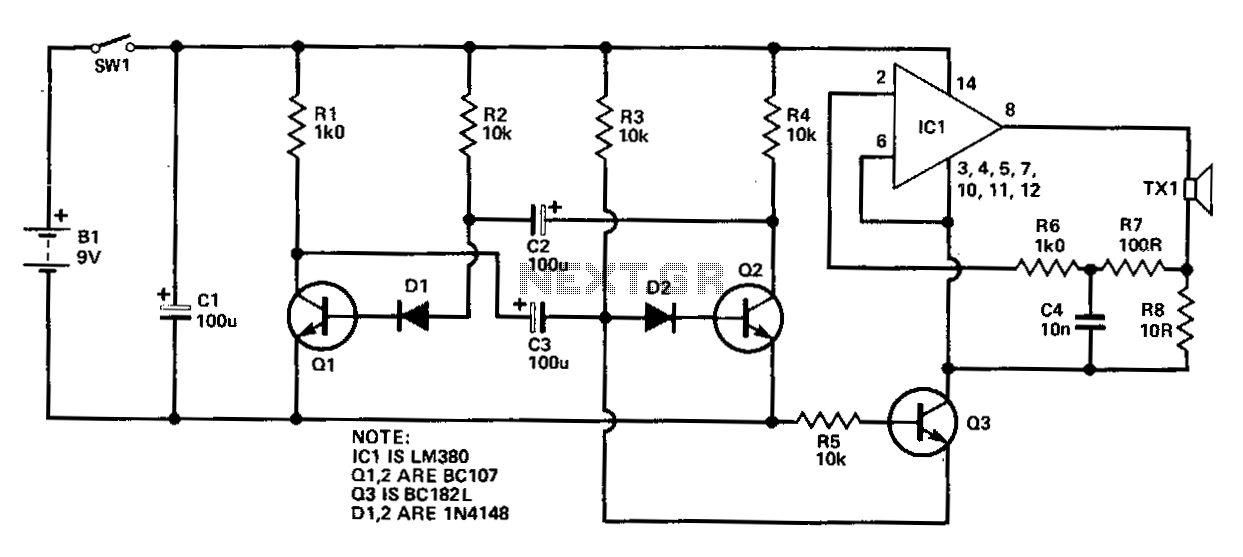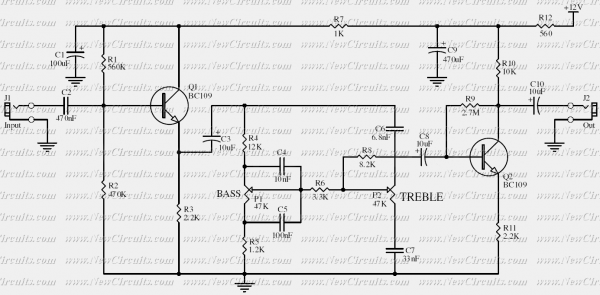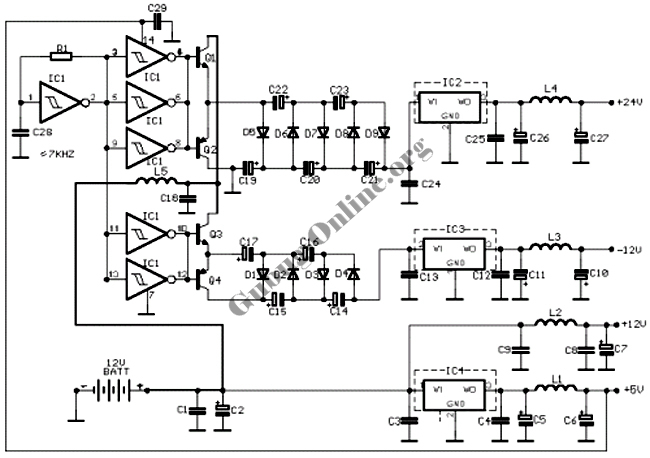
Mini Audio Mixer With Level Control Circuits

The following circuit illustrates a Mini Audio Mixer with Level Control Circuits. Features include switchable high/low sensitivity, providing high performance.
The Mini Audio Mixer circuit is designed to facilitate the mixing of multiple audio signals while allowing for level control of each input. The circuit typically consists of several input channels, each equipped with a potentiometer for adjusting the gain or level of the audio signal. The switchable high/low sensitivity feature enables the user to adapt the mixer to different input signal levels, accommodating both low-level microphone signals and higher-level line signals without distortion.
The circuit can be constructed using operational amplifiers (op-amps) for each channel, which act as summing amplifiers. The output from each channel is fed into a final summing stage, where the mixed signal is generated. The use of resistors in conjunction with the potentiometers allows for precise control over the audio levels, ensuring that the output maintains a balanced mix.
Additional features may include a master volume control, which adjusts the overall output level of the mixer, and possibly an equalizer section to modify the tonal quality of the mixed audio. Power supply considerations are also crucial, with the circuit typically requiring a dual power supply for optimal performance of the op-amps.
Overall, the Mini Audio Mixer with Level Control Circuits is a versatile tool for audio applications, suitable for use in live sound environments, home studios, or any scenario where multiple audio sources need to be combined and controlled effectively.The following circuit shows about Mini Audio Mixer With Level Control Circuits. Features: with switchable high/low sensitivity, providing high .. 🔗 External reference
The Mini Audio Mixer circuit is designed to facilitate the mixing of multiple audio signals while allowing for level control of each input. The circuit typically consists of several input channels, each equipped with a potentiometer for adjusting the gain or level of the audio signal. The switchable high/low sensitivity feature enables the user to adapt the mixer to different input signal levels, accommodating both low-level microphone signals and higher-level line signals without distortion.
The circuit can be constructed using operational amplifiers (op-amps) for each channel, which act as summing amplifiers. The output from each channel is fed into a final summing stage, where the mixed signal is generated. The use of resistors in conjunction with the potentiometers allows for precise control over the audio levels, ensuring that the output maintains a balanced mix.
Additional features may include a master volume control, which adjusts the overall output level of the mixer, and possibly an equalizer section to modify the tonal quality of the mixed audio. Power supply considerations are also crucial, with the circuit typically requiring a dual power supply for optimal performance of the op-amps.
Overall, the Mini Audio Mixer with Level Control Circuits is a versatile tool for audio applications, suitable for use in live sound environments, home studios, or any scenario where multiple audio sources need to be combined and controlled effectively.The following circuit shows about Mini Audio Mixer With Level Control Circuits. Features: with switchable high/low sensitivity, providing high .. 🔗 External reference





